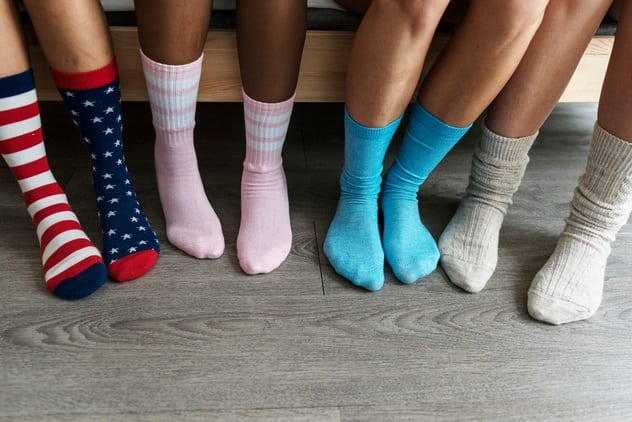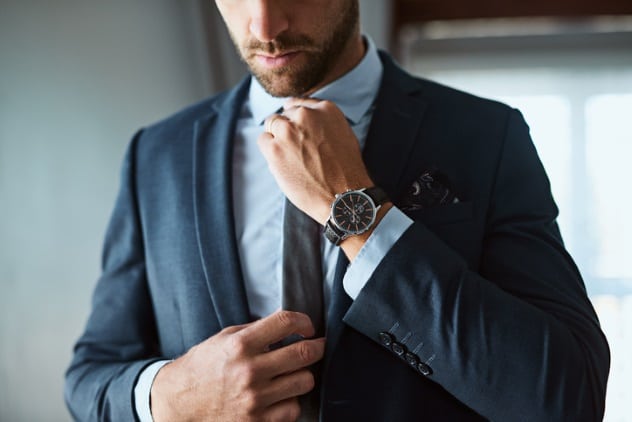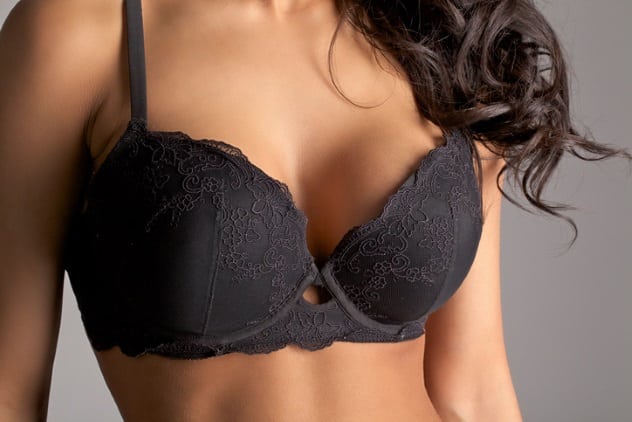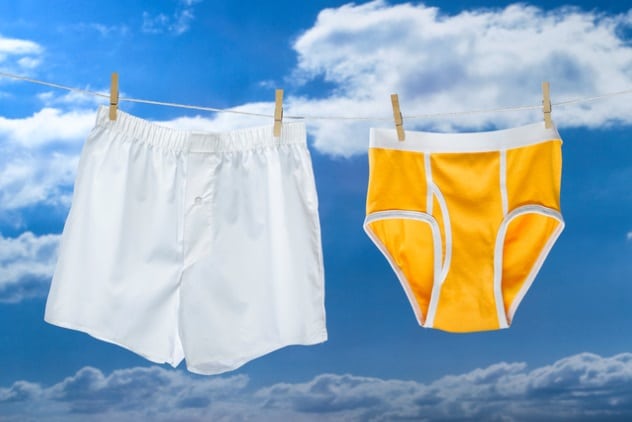 Technology
Technology  Technology
Technology  Humans
Humans 10 Everyday Human Behaviors That Are Actually Survival Instincts
 Animals
Animals 10 Animals That Humiliated and Harmed Historical Leaders
 History
History 10 Most Influential Protests in Modern History
 Creepy
Creepy 10 More Representations of Death from Myth, Legend, and Folktale
 Technology
Technology 10 Scientific Breakthroughs of 2025 That’ll Change Everything
 Our World
Our World 10 Ways Icelandic Culture Makes Other Countries Look Boring
 Misconceptions
Misconceptions 10 Common Misconceptions About the Victorian Era
 Mysteries
Mysteries 10 Strange Unexplained Mysteries of 2025
 Miscellaneous
Miscellaneous 10 of History’s Most Bell-Ringing Finishing Moves
 Technology
Technology Top 10 Everyday Tech Buzzwords That Hide a Darker Past
 Humans
Humans 10 Everyday Human Behaviors That Are Actually Survival Instincts
 Animals
Animals 10 Animals That Humiliated and Harmed Historical Leaders
Who's Behind Listverse?

Jamie Frater
Head Editor
Jamie founded Listverse due to an insatiable desire to share fascinating, obscure, and bizarre facts. He has been a guest speaker on numerous national radio and television stations and is a five time published author.
More About Us History
History 10 Most Influential Protests in Modern History
 Creepy
Creepy 10 More Representations of Death from Myth, Legend, and Folktale
 Technology
Technology 10 Scientific Breakthroughs of 2025 That’ll Change Everything
 Our World
Our World 10 Ways Icelandic Culture Makes Other Countries Look Boring
 Misconceptions
Misconceptions 10 Common Misconceptions About the Victorian Era
 Mysteries
Mysteries 10 Strange Unexplained Mysteries of 2025
 Miscellaneous
Miscellaneous 10 of History’s Most Bell-Ringing Finishing Moves
10 Common Articles Of Clothing And Their Origins
Of the fundamental physiological needs of humans, clothing is interesting, as it bridges the gap between necessity and identity. On one hand, clothing provides a layer of protection from the immediate environment; it can keep you warm, shield you from the Sun, or camouflage you from predators. On the other hand, clothing can help form an individual’s identity, such as wearing a uniform, cultural or ceremonial garb, or something unique and meaningful to that individual. Therefore, while important for survival, clothing has allowed people to identify themselves through style and fashion.
Despite the differences in identity worldwide, however, certain items of clothing have become global mainstays. This list will examine the most common modern items of clothing and how they have developed into what they are today.
10 Pants

Nothing feels better after a long day at work than peeling off this confining leg wear, which begs the question: What’s with all the pants? The short answer is that they provided a military advantage. It is much easier to ride horses while wearing pants than it is to do so in robes or togas (sorry Greeks and Romans). The first recorded usage of pants was during the sixth century BC by Greek geographers who were noting the leg wear of Central Asian and Persian horse riders.[1] They scoffed at these early trousers, saying that only barbarians would wear such clothing. Like the Greeks, the Romans similarly rejected them, but they ultimately found their effectiveness and practicality overwhelming. Eventually, Europe was taken over by pants-wearing knights and the noble elite.
Pants in Europe during the 15th century became more and more ornate, with big, puffy bits that tightly cinched around the knees and connected to socks. Luckily, this style faded out as the popular working class began to wear more practical pants. Finally, during the 19th century, the modern idea of pants really developed thanks to the stylings of the eldest son of Queen Victoria, Edward VII. Today, pants help to form the image of a working individual who can be ready for any type of action at a moment’s notice. So, while marauding the land on horseback is not your typical activity, the ability to move both legs independently and not have to worry about exposing oneself is well worth the extra steps it takes to relieve oneself.
9 Socks

Socks have been around for quite some time. Most believe that socks were developed out of animal hides during the Stone Age to protect one’s feet. There are also references to socks made from animal hairs during the eighth century BC. The Romans in the second century AD were using pieces of leather to wrap around their feet and legs; however, they soon developed what was known as udones, which were fitted to a specific person’s foot. The oldest-known socks currently existing come from ancient Egypt and are dated to between the third and sixth centuries AD. Oddly enough, these socks were meant to be worn with sandals! It was certainly a time when practicality trumped fashion.
During the fifth century AD, the pious people of Europe wore socks as a symbol of purity, and it was not until 500 years later that socks became a status symbol. Developed in conjunction with pants, socks lengthened and connected at the breech around the knees when pants were the ornate, ballooning symbols of nobility. Socks finally reached critical mass with the advent of the stocking frame knitting machine, created by William Lee in 1589. It is said that the machine was created because Lee was in love with a woman who was too preoccupied with knitting to notice him.[2] Since then, socks have been developed in mass quantities, and the added use of stretchier materials has allowed them to be worn by anyone.
8 Sunglasses

Sunglasses can be one of the top symbols of status and style. They can also be vital in environments with lots of sunlight and bright lights. It is believed that the Inuit in prehistoric times used flattened ivory lenses to protect their eyes from the Sun.[3] The next recorded use of sunglasses was during Roman times, when Emperor Nero would watch gladiator fights through emerald green gems. Sunglasses were also used around the 12th century by Chinese judges. The smoky quartz glasses offered no aid to vision but served to conceal expressions that might give away the judges’ decisions and judgments. Sunglasses also began to make their appearance throughout the world in the 12th century, and their first recorded use in a painting was in one done by Tommasso de Modena in 1352.
Until the early 20th century, most changes in sunglasses revolved around developments in prescription sunglasses and correcting vision problems. In 1929, however, Sam Foster began mass-producing and selling sunglasses to Americans in Atlantic City, New Jersey. It was around this time that movie stars began to wear them to protect themselves from the blinding light of cameras and the limelight. The military eventually developed sunglasses for their pilots during the 1930s. Sunglasses made a huge impact in World War II, when Ray Ban used lenses from the new Polaroid camera to develop polarized anti-glare lenses for pilots. Sunglasses have not changed much since then, other than to block out the haters.
7 Baseball Cap

When it comes to headgear, nothing seems more standard and natural than a baseball cap. While originally an American phenomenon, the popularity of baseball caps has exploded across the world and societal classes. It can be worn as a fashion statement, to identify one’s loyalty to a sports team, or to block out the glare of the Sun and hold one’s hair out of their face while working. For these reasons it, has been referred to as the “Common Man’s Crown,” and it is no wonder why baseball caps are worn by almost everybody.
The New York Knickerbockers introduced their baseball uniform to the world in 1849, and it featured brimmed straw hats. Other baseball teams followed suit with their own headgear. It wasn’t until 1954 when New Era made their 59Fifty model hat that the modern-day baseball cap was born.[4] (This model is still worn today by MLB players.)
While popular among baseball players, it was considered crass and weird to wear baseball caps off the field until the 1970s. Again, celebrities paved the way for wearing a previously niche article of clothing in everyday life when Tom Selleck donned his Detroit Tigers hat in the television show Magnum P.I. Other celebrities such as Spike Lee introduced other demographics to the style of baseball caps, making it a truly cross-cultural symbol of tribalism and utilitarianism. The overall design and simplicity of the baseball cap is sure to stay for some time, as any deviation usually tends to err on the wacky side. (I’m looking at you propeller caps).
6 Business Suit (Lounge Suit)

This symbol of corporate servitude and conformity actually stemmed from a more rebellious upbringing. Originally referred to as a lounge suit, predecessors of the buisness suit appeared during the 1600s under the rule of Charles II in the courts of Britain. After an outbreak of the plague, Charles II ordered nobles to begin dressing in more uniform and practical tunics and breeches in more neutral and dark colors. This clothing eventually evolved, with the help of tailoring, into the morning suit, or tuxedo, which was actually considered to be the least formal outfit still deemed formal. As for the development of the business suit itself, its origins remain a mystery, but what is known is that it started appearing in the mid-19th century as a way for the elite to dress down and the working class to dress up. The easiness of the wear and the high level of style led to the popularity of suits with every man from cab drivers to celebrities.
Interestingly enough, suits were also seen as a form of rebellion during the 1930s. The Zoot Suit Riots of 1943 were a series of brouhahas between black and Latino men and servicemen returning from World War II. The riots were coined after the suits worn by the black and Latino men, who took to wearing oversized, shoulder-padded coats and very baggy pants.[5] As is the case now, seeing groups of men in suits approach you was a cause for concern back then, albeit probably for much different reasons.
5 Hoodies

While suits have transitioned from rebellious icon to a symbol of corporate conformity, the hooded sweatshirt, or hoodie, has remained an icon for the rebellious underground. While hoods have existed throughout history, Champion Products claims to have created the hoodie in the 1930s.[6] It was originally designed for laborers and athletes working in harsh environmental conditions, but the garment eventually made the jump to personal wear when high school athletes began giving their hoodies to their girlfriends. During the mid-1970s, the hoodie began to gain its underground identity on the streets among muggers and graffiti artists in an attempt to conceal their identities and maintain a low profile. The hoodie was also iconic in the film Rocky and helped to add to that lower-class “us vs. the world” aesthetic.
Since then, the hoodie has been adopted by other groups like skaters, punks, rappers, and street artists. The connecting thread among these groups has been utilizing their lesser means to express themselves and their complicated relationship with law enforcement. Even recently, the shooting of Trayvon Martin has largely hinged on his allegedly sinister appearance with his hoodie. As a result, many people have donned hoodies to show their support for Trayvon Martin’s cause, even if it came as a violation of a dress code. Despite all of this, the hoodie is still appropriate for warmth and everyday use. Denis Wilson of The New York Times probably best typified the hoodie with an analogy to Rocky Balboa himself: “Rocky Balboa is beloved as much for his average-Joe, big-lug appeal as for his bone crushing and face pounding. And sometimes a hoodie is just soft and warm.”
4 Bras

There’s no question that women today have much more freedom than their historical counterparts, and that much can be seen with the rise in popularity of the bra. The predecessors of bras first appeared in ancient Greece as a wrap that women would wear around their chest. In the 1500s, corsets became the staple for upper- and middle-class women catering to the standards of beauty. Despite physicians blaming corsets for the multitude of health risks associated with them, it took a world war to end their prominence. Since corset frames were typically made of metal, the US War Industries Board requested in 1917 that women refrain from purchasing them in order to use the metal for military supplies. This opened up a niche for the bra to gain popularity and freed up enough metal to build two battleships!
The modern bra was first patented in 1914 by Caresse Crosby. Crosby was downtrodden by finding out that her restricting corset was actually poking through her gown before a debutante ball and, with the help of her maid, fashioned the first modern bra by sewing together two handkerchiefs with pink ribbon.[7] Women were amazed with how freely she danced and moved and offered to buy her bras. She started a business for her backless brassieres. However, the business was short-lived, and she eventually sold her patent to the Warner Bros. Corset Company for $1500.
Early on, bras were fashioned from stretchable material and one-size-fits-all, but during the 1930s, many developments, including elastic bands, cup sizes, and padded cups, helped to make bras more wearable. Throughout the years, there have been other innovations, but the bra itself has remained largely unchanged. As of now, about 95 percent of women in the Western world wear bras, but with recent trends such as #FreeTheNipple, the future popularity of the bra is questionable.
3 Boxers And Briefs

Chances are that you’ve heard the age-old, tell-all question, “Boxers or briefs?” You may be surprised, however, to find that this question is only as old as the early 20th century, when the two items were first invented. Loincloths, braies, codpieces, and knee-length drawers were the predecessors to boxers and briefs, which weren’t even invented until after the 1920s.[8]
Interestingly enough, boxers were invented first in 1925, when Jacob Golomb, the founder of Everlast, replaced the original leather-belted shorts worn by boxers with ones that featured an elastic waistband. Then, in 1934, Arthur Kneibler invented tighty whities after receiving a postcard depicting a man in a bikini-style bathing suit. The bathing suit inspired him to create a snug, legless undergarment with a Y-shaped fly. This garment was called the Jockey and sold extremely well compared to its pugilistic counterpart, which was criticized for having so little support for men’s goods.
Boxers and briefs really came into their own during the 1970s and 1980s, when designers like Calvin Klein began to make underwear more of a statement you would show off rather than hide under your pants. As a result, Joe Boxer jumped on the bandwagon and into the world’s eye with boxers that had US $100 bills printed on them. The Secret Service found that these boxers violated counterfeit laws and seized them from the company. Following the ideology that no publicity is bad publicity, Joe Boxer made this into a lighthearted issue, showing that boxers were the fun alternative to stuffy briefs.
Underwear also has a further use outside of protecting a man’s valuables: It can be used to indicate the valuables of a nation. In 2008, Federal Reserve chairman Alan Greenspan explained that a good indicator of economic health is the state of the men’s underwear industry. His reasoning was that men will usually wear ratty, old underwear until they are physically impossible to put on, and thus, replacing their underwear is done more out of luxury than necessity. Therefore, if there is a drop in the economy, one of the first things men will stop purchasing is new underwear. This was exemplified during the recession in 2008; men’s underwear sales fell 12 percent that year.
2 Tank Top

With its sleeveless design and thin material, the tank top is the optimal piece of clothing for hot environments. Go to any warm location, and you are bound to see multiple men and women wearing it. Its name leads one to believe that it originated from the military, but tank tops actually stemmed from the growing freedoms of women in the early 1900s. In 1912, the Olympic Games in Stockholm added women’s swimming to the competition. Twenty-seven women donned swimsuits with a top that looked much like today’s standard tank top, which afforded them the movement needed to swim competitively. With this exposure, rebellious women began to practice various forms of immodesty, and this swimsuit was one of their forms of rebellion. The swimsuit was referred to as a tank suit because back in the day, swimming pools were actually called swimming tanks.
Tank tops gained popularity in the public eye when men began to wear them in films. The garment was usually associated with the villains in movies, who were often depicted being physically abusive to their wives. This is why Americans began to colloquially refer to them as “wife-beaters.”[9] It wasn’t until the 1970s that tank tops became a standard item of clothing, however, and its evolution into the 1980s gained reached global proportions when the German army began selling surplus tank tops known as the Bundeswehr Tank Top. Tank tops have continued through to the modern day and are still one of the most common items of clothing you’ll find when out in warmer climates.
1 T-Shirts

Arguably the most popular article of clothing in the modern day, T-shirts have expanded to include various styles, designs, and cuts while crossing cultural and socioeconomic boundaries. The T-shirt has modest beginnings that stem from workers who modified their long johns into two pieces so that they could be worn in warmer weather. The top half was modified by the Cooper Underwear Company in 1904, and the “bachelor undershirt” was created.[10] The bachelor undershirt was a simple pullover shirt with no buttons or safety pins and thus did not require any sewing know-how to own and maintain. Shortly after this, the US Navy adopted the undershirt as a part of the uniform, as they were employing many young bachelors who knew little to nothing about sewing. The Army also adopted the undershirt after seeing its success in the Navy.
The first known mention of the T-shirt was in F. Scott Fitzgerald’s novel This Side of Paradise as something the main character takes with him to school. As we have seen with other items of clothing, sports stepped in to advance the design of the T-shirt. The University of South Carolina made a request to Jockey International Inc. in 1932 to create a T-shirt for their football players to wear under their padding. Thus, the crew-neck was born.
Up until this point, T-shirts were popular as an undergarment, but it wasn’t until soldiers in World War II returned home and began wearing them casually that the popularity of the T-shirt as outerwear began to take root. Marlon Brando’s portrayal of Stanley Kowalski in A Streetcar Named Desire furthered the popularity of the garment. Companies and businesses were not far behind in realizing the economic potential of placing their logos and designs on these shirts, as well. Nowadays, modern T-shirts serve as easily wearable, fundamental articles of clothing with enough variation in their designs to make them as unique as each person who pulls one over their head.
Read more clothing-related facts on Top 10 Times People Have Been Killed By Clothing and 10 Things Every Man Needs To Know About Clothing.








